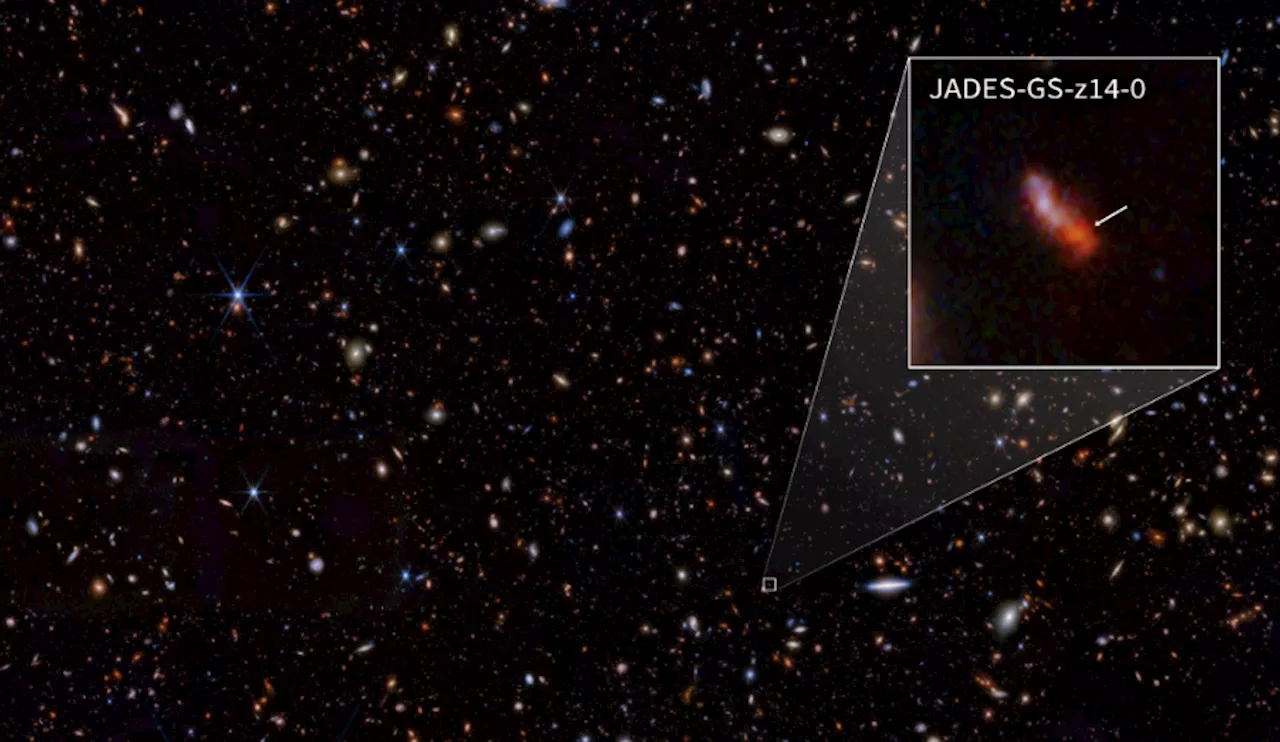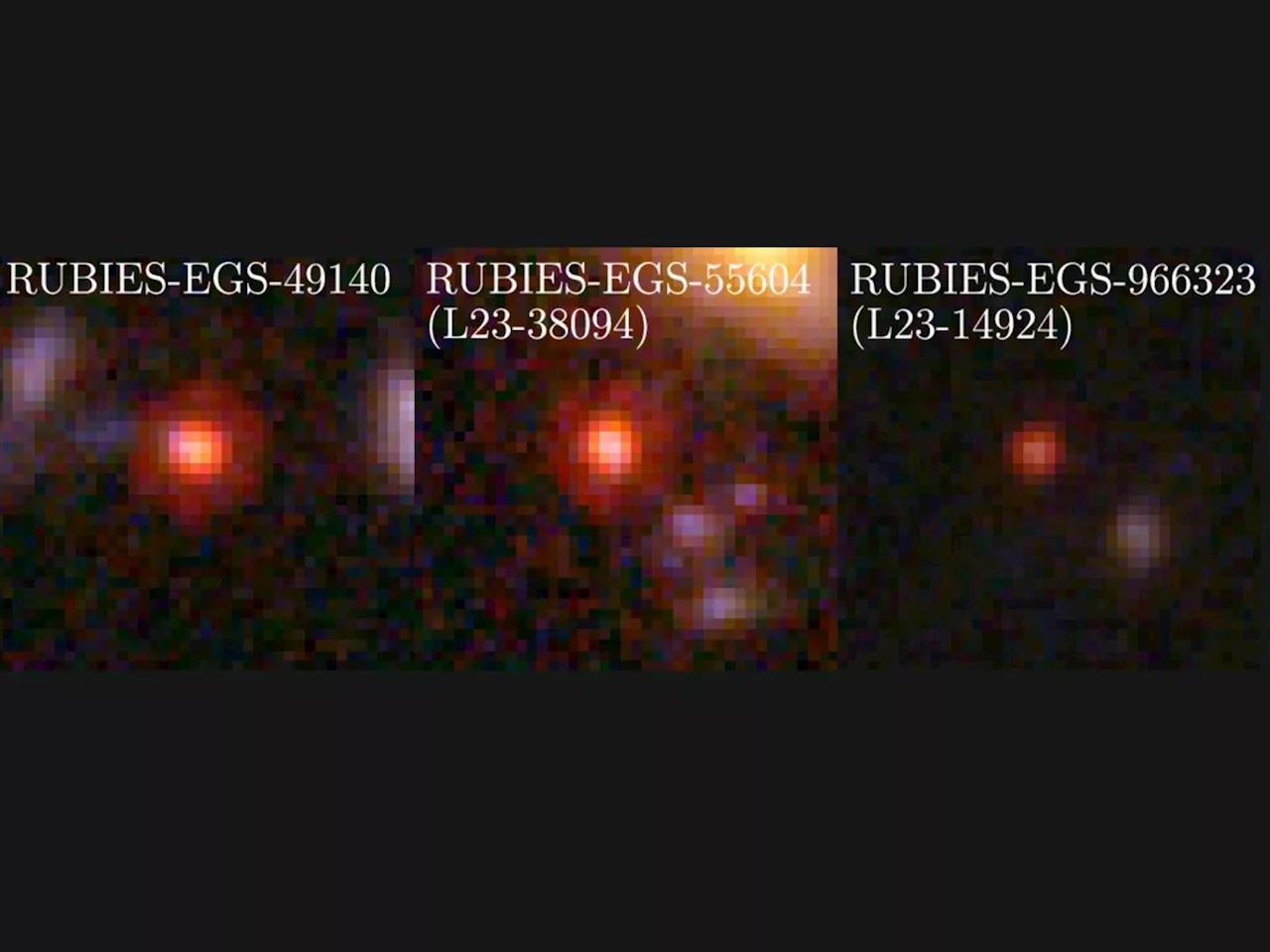A recent discovery by NASA's James Webb Space Telescope (JWST) confirmed that luminous, very red objects previously detected in the early universe upend conventional thinking about the origins and evolution of galaxies and their supermassive black holes.
Tiny bright objects discovered at dawn of universe baffle scientists retrieved 28 June 2024 from https://phys.org/news/2024-06-tiny-bright-dawn-universe-baffle.html
This document is subject to copyright. Apart from any fair dealing for the purpose of private study or research, no part may be reproduced without the written permission. The content is provided for information purposes only.Use this form if you have come across a typo, inaccuracy or would like to send an edit request for the content on this page. For general inquiries, please use ourThank you for taking time to provide your feedback to the editors.
Your feedback is important to us. However, we do not guarantee individual replies due to the high volume of messages.to let the recipient know who sent the email. Neither your address nor the recipient's address will be used for any other purpose. The information you enter will appear in your e-mail message and is not retained by Phys.org in any form.Get weekly and/or daily updates delivered to your inbox.
Physics News Science News Technology News Physics Materials Nanotech Technology Science
United States Latest News, United States Headlines
Similar News:You can also read news stories similar to this one that we have collected from other news sources.
 Rocky, carbon-rich exoplanets more likely around tiny stars, James Webb Space Telescope revealsRobert Lea is a science journalist in the U.K. whose articles have been published in Physics World, New Scientist, Astronomy Magazine, All About Space, Newsweek and ZME Science. He also writes about science communication for Elsevier and the European Journal of Physics. Rob holds a bachelor of science degree in physics and astronomy from the U.K.
Rocky, carbon-rich exoplanets more likely around tiny stars, James Webb Space Telescope revealsRobert Lea is a science journalist in the U.K. whose articles have been published in Physics World, New Scientist, Astronomy Magazine, All About Space, Newsweek and ZME Science. He also writes about science communication for Elsevier and the European Journal of Physics. Rob holds a bachelor of science degree in physics and astronomy from the U.K.
Read more »
 NASA’s James Webb Space Telescope could help solve these 5 exoplanet puzzlesA lot of people are focused on signs of alien life, but the space telescope will have a lot to say about exoplanet geology and formation.
NASA’s James Webb Space Telescope could help solve these 5 exoplanet puzzlesA lot of people are focused on signs of alien life, but the space telescope will have a lot to say about exoplanet geology and formation.
Read more »
 NASA's James Webb Space Telescope finds most distant known galaxyOver the last two years, scientists have used NASA's James Webb Space Telescope to explore what astronomers refer to as Cosmic Dawn -- the period in the first few hundred million years after the big bang where the first galaxies were born.
NASA's James Webb Space Telescope finds most distant known galaxyOver the last two years, scientists have used NASA's James Webb Space Telescope to explore what astronomers refer to as Cosmic Dawn -- the period in the first few hundred million years after the big bang where the first galaxies were born.
Read more »
 NASA’S James Webb Space Telescope has found the most distant galaxy ever observedLawrence is a contributing reporter at Engadget, specializing in our AI overlords, musical doodads and, of course, garden variety gaming and tech. To that end, Lawrence once lost badly in multiplayer Mario to Nintendo’s own Shigeru Miyamoto, who laughed gleefully as he threw him down a pit.
NASA’S James Webb Space Telescope has found the most distant galaxy ever observedLawrence is a contributing reporter at Engadget, specializing in our AI overlords, musical doodads and, of course, garden variety gaming and tech. To that end, Lawrence once lost badly in multiplayer Mario to Nintendo’s own Shigeru Miyamoto, who laughed gleefully as he threw him down a pit.
Read more »
 NASA’s Webb Reveals Long-Studied Star Is Actually TwinsManaged by NASA’s Jet Propulsion Laboratory through launch, Webb’s Mid-Infrared Instrument also revealed jets of gas flowing into space from the twin stars.
NASA’s Webb Reveals Long-Studied Star Is Actually TwinsManaged by NASA’s Jet Propulsion Laboratory through launch, Webb’s Mid-Infrared Instrument also revealed jets of gas flowing into space from the twin stars.
Read more »
 NASA's Webb opens new window on supernova sciencePeering deeply into the cosmos, NASA's James Webb Space Telescope is giving scientists their first detailed glimpse of supernovae from a time when our universe was just a small fraction of its current age. A team using Webb data has identified 10 times more supernovae in the early universe than were previously known.
NASA's Webb opens new window on supernova sciencePeering deeply into the cosmos, NASA's James Webb Space Telescope is giving scientists their first detailed glimpse of supernovae from a time when our universe was just a small fraction of its current age. A team using Webb data has identified 10 times more supernovae in the early universe than were previously known.
Read more »
